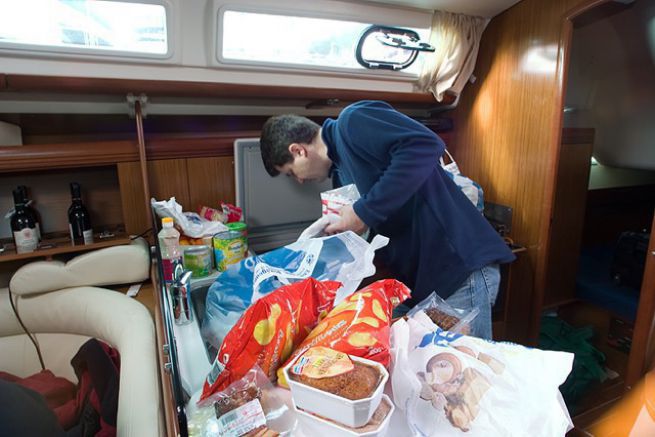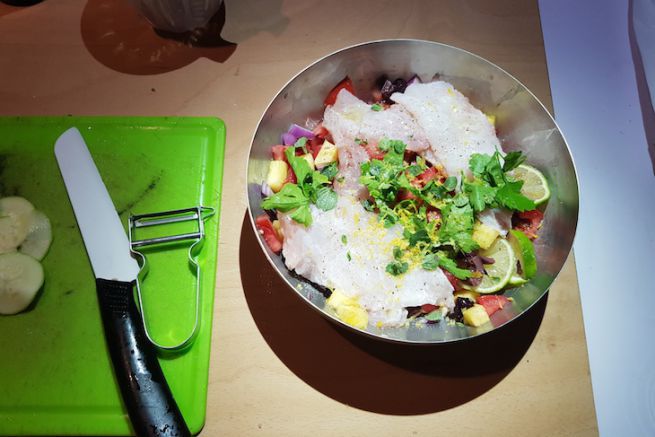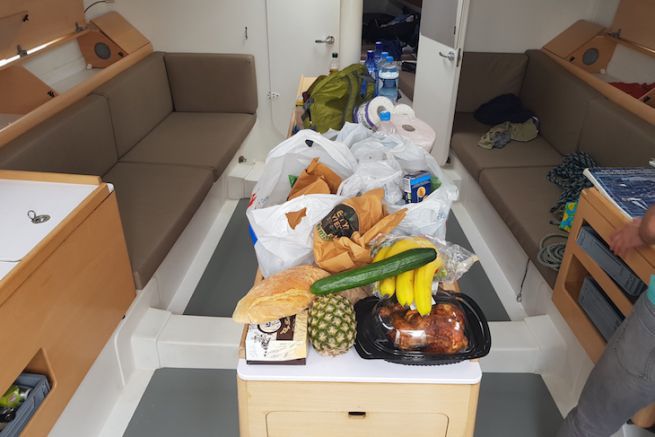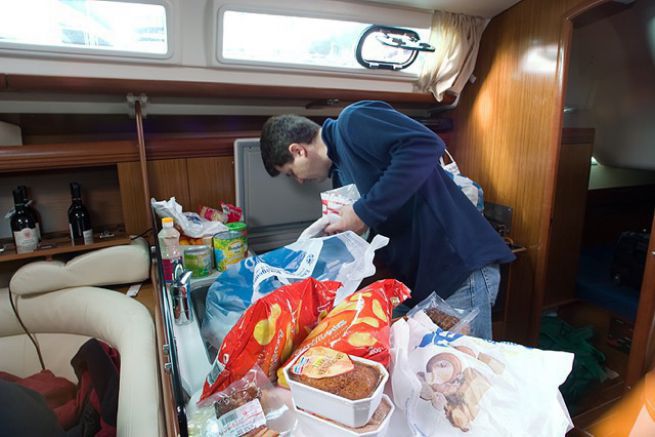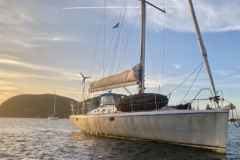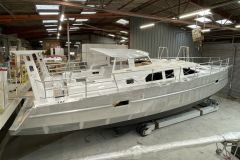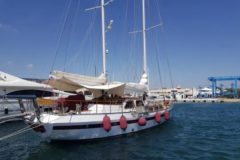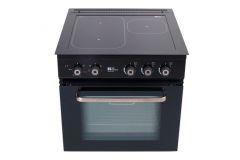Starches and legumes
Plan a base of products that are imponderables such as starchy foods (pasta, rice, semolina, wheat, mashed potatoes, lentils, quinoa...), canned vegetables and fruits (beans, peas, carrots, potatoes, mushrooms, ratatouille, but, asparagus, pears, apples, pineapple, etc.) and that will decorate your dishes when fresh vegetables and fruits have all been consumed.
The grocery store
To give taste to your dishes and vary the pleasures, provide a good grocery store: oil, vinegar, salt, peppers, spices, herbs, broths, stockings, mustard, soy sauce, mayonnaise, ketchup, coconut milk, etc.. Then let your imagination run free to combine the flavours together.
Don't forget flour (and/or the ideal cornstarch for sauces), sugar, yeast, vanilla sugar, crisps and other dry cakes, peanuts, almonds, dried fruit, chocolate bars... If you are used to taking an aperitif, bring it with you. Don't forget breakfast with cereals for example or muesli, chocolate powder for the youngest, etc..
For the preparation of pastries or breakfasts, also provide honey, Nutella, maple syrup, liquid caramel, coconut powder, almond powder, orange blossom, etc..
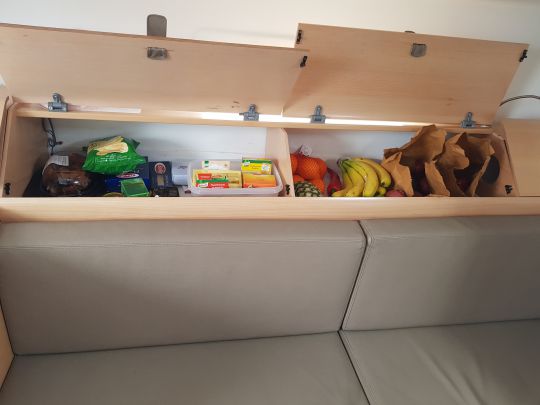
Fruits and vegetables
Buy your fruits and vegetables as unripe as possible and favour those that keep for a long time such as grapefruit, apples, bananas, squash, carrots or potatoes as well as the essential onions, garlic and shallot that will give taste to your dishes. For your purchases, favour producers, markets or shops that store fruit and vegetables at room temperature. If they have been kept cold before being stored outside the fridge, they will rot faster.
Hang your fruits in nets which will lengthen their conservation. You can also monitor their condition more regularly. Be careful, however, not to mix certain fruits and vegetables in contact with each other, which would cause them to rot. For the others, you can wrap them in damp paper, which will lengthen their shelf life (the salad, for example, can be kept for almost 2 weeks in Tupperware after having been washed and stripped of the leaves with a sheet of sopalin, to be renewed regularly). Finally, the most fragile will be stored in the fridge. In all cases, store away from heat and light.
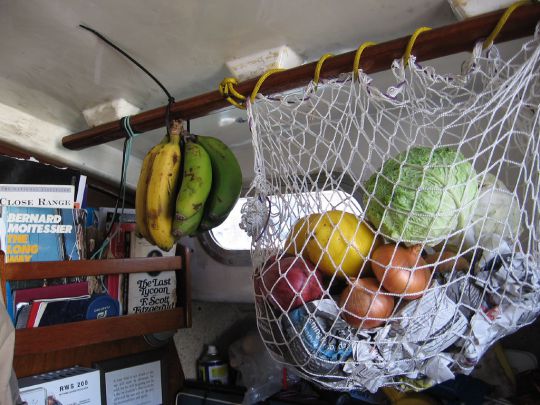
The eggs
Eggs can be stored out of the fridge, protected from light in polystyrene packaging or paper and can last up to 1 month. But don't forget to return the box every day to prevent the yellow from coming into contact with the shell.
Meat and fish
Plan which foods to keep in a cool place, depending on the size of your refrigerator. Be aware that meat, fish (unless vacuum packed) and ham do not keep long. Instead, choose dried or smoked meats that keep much longer and even outside the fridge (provided they are protected from heat and well packaged) such as smoked ham, sausage, dried meat, smoked filet mignon, etc.
On a long cruise, you have time to enjoy, and why not go troll fishing. You will then have the possibility to eat fresh fish.
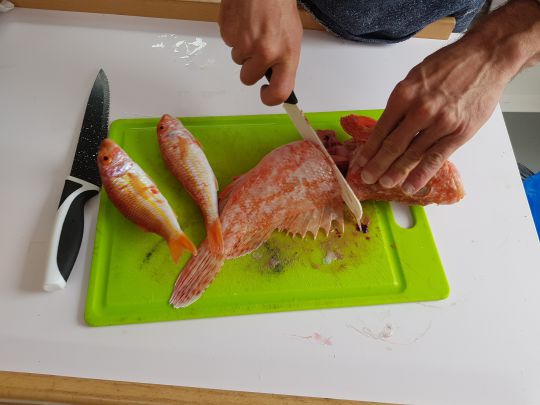
Dairy products
Milk can be kept out of the fridge, just like liquid cream (unlike cream in jars) as long as they are not opened and keep very long (UHT). A significant space saving in the cool ! Hard cheeses keep longer, but in most cases, it keeps very long in the fridge. Yoghurts and butter can be stored in a cool place, just like soft cheeses (mozzarella, feta...).
Canned foods
Canned food remains the best and longest to keep on board. Besides vegetables and fruit (which we have seen above), you can also buy pâté, tuna, sardines, prepared salads, prepared dishes (sauerkraut, ravioli, couscous...) which will be a precious asset for a quick meal or when stocks are exhausted.
The jam in jars can also be kept for a very long time outside the fridge. Why don't you take the grandma's pots with you before you go, or make them yourself, it'll be a souvenir too!
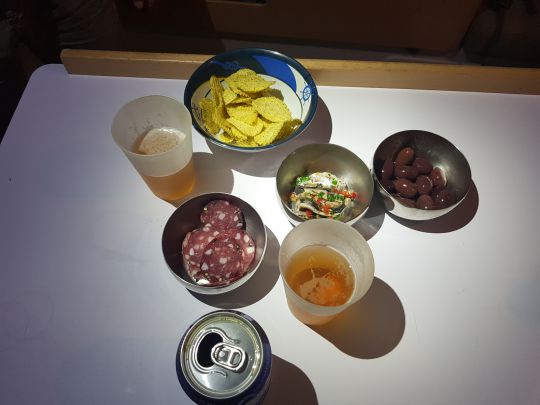
The bread
Bread does not keep long. So unless you replace it with sandwich bread (which can be kept for up to 3 weeks) or pre-baked breads to reheat in the oven (provided you have an oven), you will have to do it yourself. Don't forget to stock up with everything you need, because you won't find all the ingredients you need to make it... Afterwards, it's up to you to choose how to cook it . There are many methods: oven, pan, casserole or with a bread maker.
The water
First of all, don't neglect water. When sailing, you drink much more than on land, so it is important to plan how much water you need. Either you bring water bottles (minimum 2L/day/person) or you drink the water from your tanks. Be aware that sufficient quantities must be provided, especially if you also use it for dishes, showers, etc.
It's all a matter of taste and ability. Some may find a taste in the water tanks, preferring bottled water. They will nevertheless use it boiled for the preparation of hot drinks or the meal. While others will even cook with mineral water. There are disinfectants for the water in the tanks and charcoal filters to be installed on the tap to purify it.
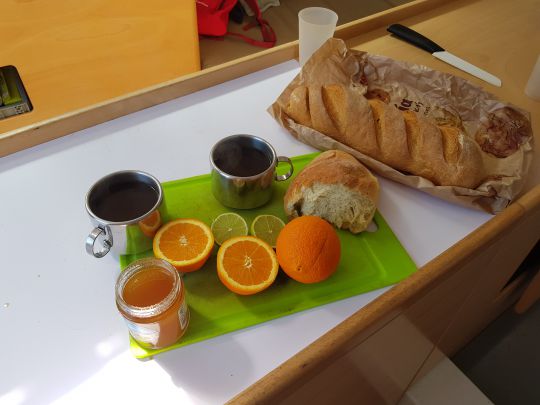
Beverages
Depending on where you are sailing, you sometimes need to warm up or cool down. Some drinks will also be added to the fresh stock. So plan tea, coffee, herbal teas, infusion for your meals, but also to warm you up.
The rest is to your taste, since everything is preserved: flavoured waters, juices of all kinds, sodas, strong alcohol, beers, wines, etc.. Just plan their consumption, which will be regular or occasional to predict your quantities.

